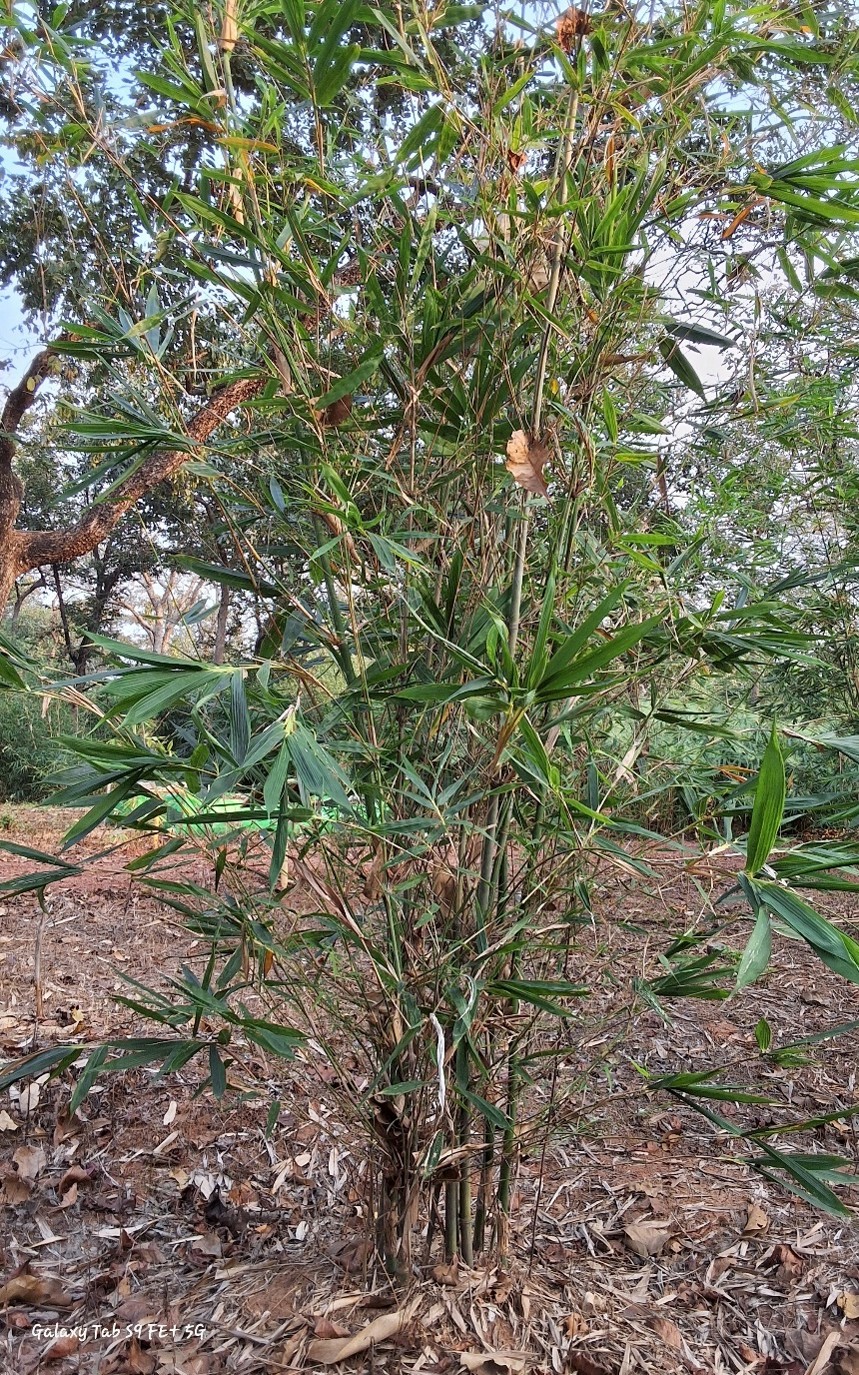Schizostachyum beddomie

Schizostachyum beddomie
commonly known as Beddome's Bamboo in English and Beddome's Bans in India, is a clumping, dense bamboo species native to the Western Ghats and other parts of southern India. It is also introduced to other tropical regions for ornamental use and cultivation.
This bamboo species has an upright growth habit and can grow to a height of 6 to 8 meters with a diameter ranging from 3 to 5 cm. The culms are green with a slightly bluish tint, and the internode length ranges from 10 to 15 cm. The culm sheath is green when young, turning light brown with age. The adaxial surface of the culms is glabrous, while the abaxial surface is lightly covered with fine hairs, and the margins are ciliate.
The leaves of Schizostachyum beddomie are lanceolate with pointed tips, ranging in length from 15 to 25 cm and 2 to 4 cm in breadth. They have a glossy, leathery texture and are dark green, sometimes with a slight bluish hue. The leaves are arranged alternately along the culm in a spiral fashion, contributing to the bamboo's ornamental appearance.
This bamboo species is predominantly found at altitudes between 800 to 2000 meters above sea level, thriving in tropical and subtropical forests with high rainfall. It prefers fertile, well-drained soils, tolerating slightly acidic to neutral pH levels, and thrives in soils rich in organic matter.
Schizostachyum beddomie has large, spreading panicles as its inflorescence, which are not particularly conspicuous compared to other bamboo species. The flowers are small and numerous, arranged in loose clusters, with 6 to 8 stamens exserted from the glumes. This bamboo flowers very rarely, typically once every 30 to 40 years, and its seeds are small and light, with low viability due to infrequent flowering.
Propagation of Schizostachyum beddomie is typically done through culm cuttings, which root easily under the right conditions. It can also be propagated by dividing mature rhizomes during the growing season. Seed propagation is rarely used due to the bamboo's infrequent flowering cycle.
This bamboo has multiple uses, including ornamental planting in gardens, parks, and as a hedge. The strong, dense culms are suitable for light construction, such as scaffolding and furniture making, and are also used in traditional bamboo crafts, such as baskets and small furniture. In addition, it is employed for erosion control and soil stabilization, especially in hilly or coastal regions.
In summary, Schizostachyum beddomie is a highly ornamental bamboo known for its dense, upright growth and bluish-green culms. It is suitable for gardens, parks, light construction, crafts, and erosion control, and can be propagated through culm cuttings or rhizome division due to its rare flowering and low seed viability.
Listen Audio:
Need assistance? BRTC Faculty